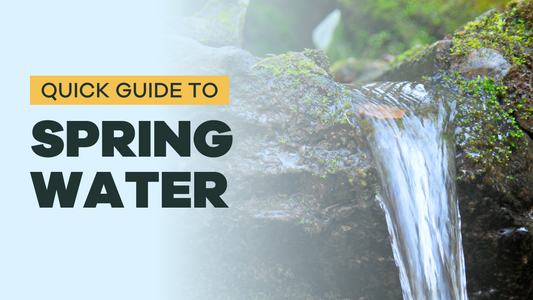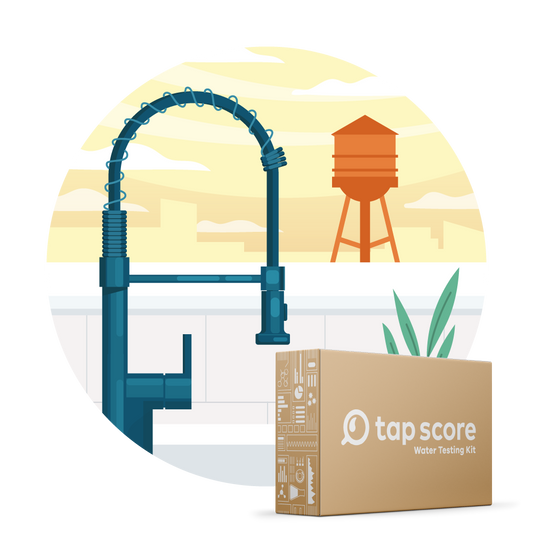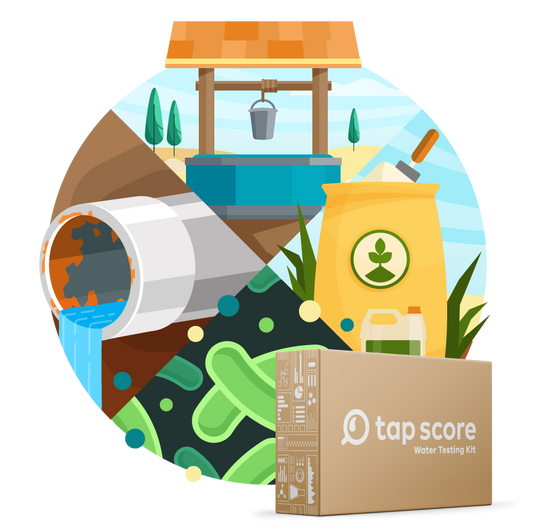
Golf Courses and Pesticides: Is Your Tap Water at Risk?
Our blog is written by real experts— not AI. Each guide is carefully reviewed and updated based on the latest research. Plus, with no affiliate links, you can count on unbiased insights you can trust.
Golf courses and pesticides go hand in hand — bright greens depend on chemicals that keep weeds, insects, and fungi in check. But as these substances seep into soil and groundwater, researchers are asking new questions about long-term health effects.
A new study published in the Journal of the American Medical Association (JAMA) found that people living near golf courses had an increased risk of developing Parkinson’s disease and that risk decreased as distance from a golf course increased. The suspected link? Pesticide exposure through drinking water or air drift. While scientists haven’t proven causation, the findings add to decades of research connecting certain pesticides to neurological risks.
In this post, we unpack what’s known (and what’s not) about how golf course maintenance practices can affect local water quality — and what you can do to keep your own tap water safe.
Table of Contents:
- What the Research Found
- How Pesticides Reach Drinking Water
- Which Compounds Are Most Concerning?
- Test Your Water for Pesticides at Home
- FAQs
- What’s the Takeaway?
What the Research Found
Researchers analyzed data from more than 5,500 people in Minnesota and Wisconsin–they found that people living within one mile of a golf course had 126% increased odds of developing Parkinson’s disease compared to those living more than six miles away.[1]
Those who received their drinking water from municipal systems that include a golf course had nearly twice the odds of developing Parkinson’s disease compared to those in water systems without one. For groundwater-sourced drinking water (both municipal and private wells), the link was strongest in areas with “vulnerable groundwater” — regions where soil and rock formations make it easier for surface contaminants to reach underground aquifers (coarse textured soil, shallow bedrock or karst geology).
The findings suggest that pesticides used to maintain golf courses may be entering shared groundwater, increasing the potential for long-term, low-level exposure through drinking water.
How Golf Course Pesticides Reach Drinking Water
Golf courses use large amounts of pesticides, herbicides, and fungicides to maintain their turf. Once these chemicals are applied, they don’t always stay on the grass.
Rain and irrigation can carry residues through the soil and into groundwater aquifers or nearby wells. In regions with sandy soil, shallow bedrock, or karst geology, that movement can happen quickly. Once in groundwater, these chemicals can mix into the same water that flows to municipal wells or private wells at nearby homes.
Which Compounds Are Most Concerning?
While the JAMA study did not test for specific compounds, there is evidence linking certain golf-course pesticides to Parkinson’s disease.[2-6]
Known Parkinson’s-linked golf-course pesticides in drinking water include:
- Paraquat (herbicide)
- Maneb and mancozeb (fungicides that release manganese)
- Chlorpyrifos (organophosphate insecticide)
- Atrazine and simazine (triazine herbicides)
All of these compounds show epidemiologic or mechanistic associations with Parkinson’s disease. They are frequently applied on turf and pose runoff risks, potentially leading to contamination of groundwater.
These join other turf-care chemicals already under scrutiny for neurological or environmental impacts, including glyphosate, 2,4-D, and other organophosphates. Even in small concentrations, repeated exposure through drinking water can contribute to cumulative health effects over time.
How to Test Your Water for Pesticides at Home
Does living near a golf course automatically make your water unsafe? Not necessarily — but the study highlights how environmental exposure can depend on where your water comes from. Testing your water is a vital part of understanding your water.
What Can You Do About Pesticides in Water?
If your home gets water from a groundwater-fed municipal system and there’s a golf course within the service area, it’s reasonable to test your water for pesticides. The same goes for private wells, which can be even more vulnerable to local contamination from turf, farmland, or landscaping runoff.
Testing doesn’t just identify risks — it can also offer peace of mind if everything results come back clean. Either way, data beats guessing!
Pesticide Water Test Kits
Tap Score offers several easy-to-use, mail-to-lab tests designed to detect pesticides and related contaminants in drinking water.
Tap Score’s Paraquat Water Test detects paraquat herbicide, one of the most strongly Parkinson’s-linked chemicals.
Tap Score’s Pesticides Water Test screens for a wide range of herbicides and insecticides, including atrazine and simazine.
Tap Score’s EPA 538 Fungicide and Pesticide Water Test includes dithiocarbamate fungicides like maneb and mancozeb.
Tap Score Tip: Pair any of the targeted tests above with Tap Score’s Advanced Home Water Test, which covers the most common well-water issues such as metals, minerals, bacteria, and volatile organic compounds (VOCs) that often accompany agricultural or turf runoff.
Each test kit includes:
- Pre-paid shipping
- Professional lab analysis
- Easy-to-understand results.
- Guidance on treatment options, such as granular activated carbon (GAC) or reverse osmosis (RO) filters when appropriate.
Can You Filter Your Water for Pesticides?
In order to determine the appropriate treatment for your water, it’s best to test first to determine which pesticides (if any) are contaminating your water. Many of the contaminants in question are likely reduced by activated carbon; reverse osmosis is likely to be effective in reducing most, if not all, compounds discussed.
While golf courses may offer open green space, maintaining that perfection comes at an environmental cost. These new JAMA findings highlight how pesticides used for turf management can migrate into drinking water, raising potential long-term health concerns.
Understanding what’s in your water is the simplest step toward protecting yourself and your family — and it starts with testing.
Frequently Asked Questions
Does this mean my tap water is unsafe?
Not automatically. The study shows a population-level pattern, not a guarantee. The best way to figure out your situation is to test your water directly.
I’m on city water, should I still test?
Even if you’re on municipal (city) water, testing may still be advisable. The study found that municipal water systems with service areas including a golf course, and especially those drawing from vulnerable groundwater, showed the strongest link to elevated Parkinson’s disease risk.
Test with Tap Score:
What about private wells?
Private wells can be more variable and unregulated. Annual testing is recommended if you’re near golf courses, farms, or heavy landscaping.
Test with Tap Score:
What if pesticides are detected?
Tap Score results explain each compound and suggest treatment options like carbon filtration or reverse osmosis if necessary.
What’s the Takeaway?
- Living within one to three miles of a golf course was linked to higher Parkinson’s disease risk, with risk decreasing at greater distances.
- Common turf pesticides like glyphosate, 2,4-D, and organophosphates have known neurological and environmental impacts.
- If you live near a golf course, farmland, or landscaping-heavy neighborhood, testing your water is an easy, science-backed way to understand your exposure and take action if needed.
- Tap Score offers easy-to-use kits to test your tap water for pesticides, complete with free round trip shipping and easy to understand reports from a certified laboratory.
Read More
▾Where Does My Tap Water Come From?
Reasons Why People Test Their Water
Sources and References
▾- Proximity to Golf Courses and Risk of Parkinson Disease | Neurology | JAMA Network Open
- A Common Feature of Pesticides: Oxidative Stress—The Role of Oxidative Stress in Pesticide‐Induced Toxicity - Sule - 2022 - Oxidative Medicine and Cellular Longevity - Wiley Online Library
- Pesticides at brain borders: Impact on the blood-brain barrier, neuroinflammation, and neurological risk trajectories
- Rotenone, Paraquat, and Parkinson’s Disease | Environmental Health Perspectives | Vol. 119, No. 6
- Proximity to residential and workplace pesticides application and the risk of progression of Parkinson's diseases in Central California - ScienceDirect
- An epigenome-wide association study of ambient pyrethroid pesticide exposures in California's central valley











